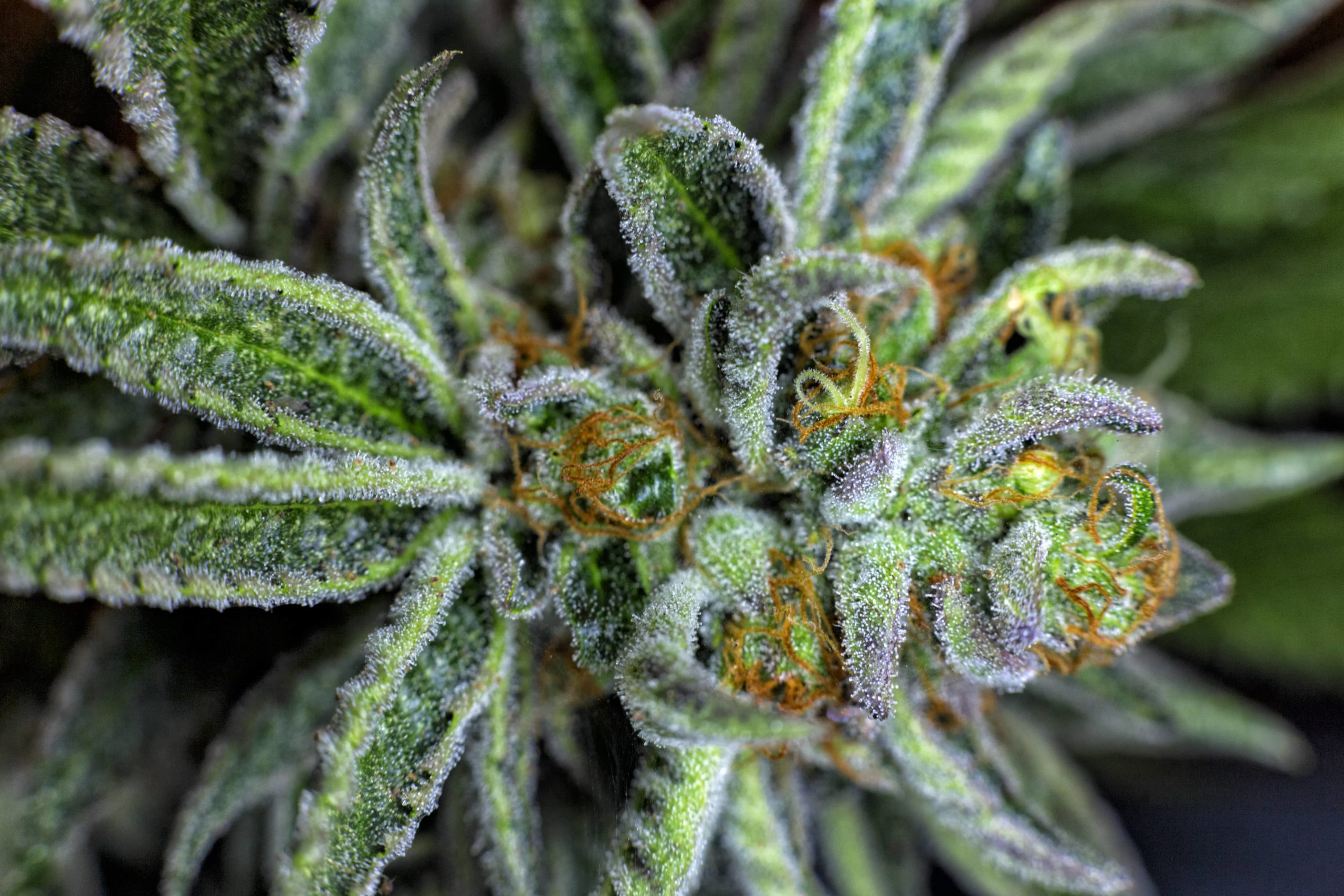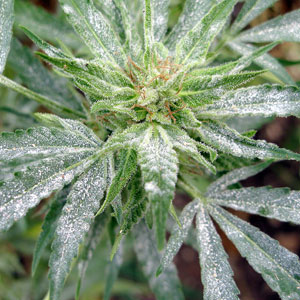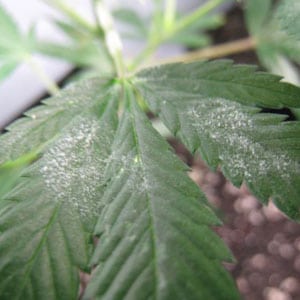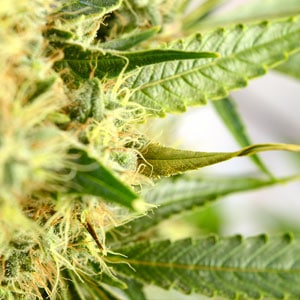
As a cannabis aficionado, you’re aware that consuming moldy marijuana can result in severe medical concerns. Moldy cannabis contains harmful bacteria and fungi that can cause lung infections and other respiratory problems. In this blog post, we will explore the dangers of smoking moldy weed and provide tips on how to prevent mold from growing on your buds.
We will discuss the difference between bud rot and mold, how to identify if your weed is contaminated with mold, and what steps you should take if you find dark spots or white fuzz on your buds. We’ll also share some simple yet effective ways to store your marijuana properly in mason jars or other containers to prevent moisture buildup.
By the end of this post, you’ll be well-versed in how to ensure your cannabis remains mold-free and stored correctly for maximum freshness.
So let’s dive into the world of moldy weed prevention together!
Table of Contents:
- Identifying White Powdery Mildew
- Treating White Powdery Mildew
- Preventing White Powdery Mildew
- Identifying Bud Rot
- Treating Bud Rot
- FAQs in Relation to Moldy Weed
- Conclusion
Identifying White Powdery Mildew
White powdery mildew (WPM) is a common fungal disease that affects cannabis plants. It is easily identifiable by its white, powdery patches on the leaves and stems of infected plants. The fungus can spread quickly, so it’s important to be able to recognize it early on in order to prevent further damage.
The first sign of WPM is small white spots or patches on the leaves and stems of your cannabis plant. These spots will grow larger as time passes and may eventually cover entire sections of the plant. If left untreated, these spots will become more pronounced and may start to look like a thin layer of white dust or flour coating the affected area.
Another way you can identify WPM is by examining the underside of your cannabis leaves for signs of webbing or cobweb-like structures under magnification such as with a magnifying glass or microscope. This type of webbing indicates an infestation from spider mites which are often found in conjunction with WPM infections due to their ability to spread fungal spores through contact with other plants they have come into contact with previously.
If left unattended, WPM can spread like wildfire across both sides of the leaf until it is completely whitewashed in powdery patches, leaving the healthy parts looking like chalk and cheese. Keywords: Whitewashed, Chalk and Cheese
It is important to identify white powdery mildew in order to prevent further damage and loss of crop. To ensure the healthiest harvest, it is necessary to understand how to treat any instances of this fungal infection.

Treating White Powdery Mildew
White powdery mildew is a common problem for cannabis growers. It’s caused by fungi that thrive in warm, humid environments and can cause serious damage to your plants if left untreated. The leaves of your plants may show a white, dusty covering, an indication that white powdery mildew is present. If left unchecked, the white powdery mildew can spread across all of your plant’s foliage and eventually lead to its demise.
Fortunately, there are several ways you can treat white powdery mildew on your cannabis plants. To help prevent white powdery mildew, ensure your grow room has good air circulation and ventilation to avoid moisture buildup around the plants. Watch out for any indications of contamination, such as dark patches or yellowing foliage, and act quickly if observed.
If your cannabis crop does become infected with white powdery mildew, one effective treatment option is using mason jars filled with water to create humidity levels that will discourage further growth of the fungus while allowing air flow around the affected areas. You should also use neem oil or sulfur-based fungicides as soon as possible after noticing symptoms; these products help kill existing spores before they have a chance to spread even further throughout your crop.
Finally, remember that smoking moldy weed isn’t just gross – it could be dangerous too. Mold spores can cause lung infections when inhaled into our lungs, so make sure you throw away any buds showing signs of bud rot or other fungal diseases before consuming them. Taking preventative measures against mold growth will help ensure healthy harvests now and in the future – happy growing.
Treating White Powdery Mildew is an important step to ensure the quality of your cannabis crop. Averting White Powdery Mildew is a must for guaranteeing the standard of your cannabis harvest, so let’s examine how to keep it from developing in any case.
Preventing White Powdery Mildew
It can cause significant damage to your plants and reduce yields, so it’s important to take steps to prevent it from occurring. To minimize the risk of white powdery mildew, take proactive steps such as controlling humidity levels and regularly inspecting your plants for signs of infection.
Start with Cleanliness – Keeping your grow room clean is essential for preventing white powdery mildew. Remove any dead leaves or debris that could harbor spores and make sure all surfaces, including walls and floors, are regularly wiped down with an appropriate cleaning solution.
Manage Humidity Levels – White powdery mildew thrives in humid conditions, so keeping humidity levels low will help you avoid this issue. Investing in a dehumidifier could be advantageous for cutting down on humidity and keeping mold away.
Use Fans – Installing fans throughout your grow room can also help you keep humidity levels under control by circulating air around the area more efficiently than relying on natural ventilation alone. Additionally, fans will create a wind flow which helps discourage fungal spores from settling on plants or other surfaces where they could germinate and spread quickly if left unchecked.
Control Temperature Fluctuations – In addition to managing humidity levels effectively, maintaining stable temperatures is another key factor when it comes to preventing white powdery mildew outbreaks in cannabis grows rooms. Make sure there isn’t too much variation between day-time highs and night-time lows as this can encourage fungal growth if conditions become too favorable for its development at certain times of day or night
Lastly, monitoring your plants regularly for signs of infection should be a part of your regular maintenance routine when growing indoors. Look out for any discoloration or patches on foliage that might indicate an infestation has taken hold before it becomes widespread across multiple crops simultaneously.
Staving off white powdery mildew is a must for guaranteeing the well-being of your cannabis plants and getting optimum yields. To further ensure your success, it’s important to understand how to identify bud rot before it takes hold of your crop.\
Identifying Bud Rot
Bud rot is one of the most common problems faced by cannabis growers. It can cause serious damage to plants, resulting in decreased yields and quality. Fortunately, it’s relatively easy to identify and treat if caught early enough.
The first sign of bud rot is discoloration on the leaves or buds of your plant. The affected area may be yellowish-brown or gray in color, with a distinct smell that resembles rotting vegetation. Buds will also become soft and mushy when touched, as opposed to firm like healthy buds should be. In severe cases, entire branches may turn brown or black due to infection from the fungus causing the rot.
Another telltale sign of bud rot is fuzzy white patches appearing on leaves or stems near infected areas – these are spores produced by fungi which spread quickly throughout your crop if left untreated for too long. If you notice any signs of mold growth around your plants, take immediate action before it spreads further.
It is important to act quickly when dealing with bud rot; once it takes hold in a plant’s flowers, there is no reversing the process – they must be removed immediately before other parts of the crop become affected as well. Pruning away all infected material can help reduce further contamination while also allowing more air circulation around remaining buds (which helps prevent future outbreaks). Additionally, make sure that humidity levels stay low and avoid over-watering your plants – both of which can contribute significantly towards fungal growth inside greenhouses/indoor grow spaces where conditions are already ideal for mold development.
Identifying bud rot is an important step in preventing moldy weed and keeping your crop healthy. Treating bud rot requires a combination of preventive measures, careful observation, and quick action to protect your plants from further damage.
Treating Bud Rot
Bud rot is a serious threat to cannabis growers and smokers alike. It can quickly ruin an entire crop if not addressed promptly and correctly. Fortunately, there are several effective treatments for bud rot that can help prevent it from taking over your garden or smoking supply.
The first step in treating bud rot is to identify the problem early on. This means looking out for signs of infection such as discoloration, wilting, and yellowing leaves near the buds. If you notice any of these symptoms on your plants, it’s important to act quickly by removing affected areas before they spread further into the plant material. To do this safely, use sterile scissors or tweezers to cut away infected parts of the plant while avoiding contact with healthy tissue as much as possible. Dispose of all infected materials immediately so they don’t contaminate other plants nearby.
Once you have identified and removed affected areas, it’s time to start treating bud rot itself with fungicides specifically designed for controlling powdery mildew (PM). PM is one of the most common causes of bud rot in cannabis gardens so using a product like sulfur-based fungicides can be very helpful in preventing its spread throughout your crop. Make sure to follow instructions carefully when applying these products because improper application may lead to more damage than good.
Proper air circulation is essential to keep bud rot at bay. To ensure your plants remain healthy, set up fans around the garden area to maintain a consistent flow of air throughout their growing cycle – particularly during flowering stages when humidity levels are higher indoors or outdoors. By doing so, you can reduce moisture build-up and prevent fungal infections such as powdery mildew (PM) or botrytis (budrot). By taking a preemptive stance, you can stop any potential issues before they start. Keywords: Air Circulation, Fans, Humidity Levels, Fungal Infections
Finally, regular monitoring should be done throughout each stage of growth – especially during flowering – since changes happen quickly with cannabis plants and small problems can become big ones overnight if left unchecked. Keep an eye out for any signs of discoloration or wilting leaves near buds; those are usually telltale signs that something isn’t quite right within a plant’s environment so take action accordingly by following some steps outlined above before it gets too far gone.
FAQs in Relation to Moldy Weed
Is mold on weed plants bad?
Yes, mold on weed plants is bad. Mold can cause health issues when inhaled and can reduce the quality of the buds. It also has a negative impact on yield and potency. Maintaining the humidity in your grow space is essential for avoiding mold, so keep an eye out for any indications of contamination or mildew growth. If you spot any mold developing, take steps immediately to remove it before it spreads further throughout your crop.
What is weed mold called?
White, fuzzy growth on cannabis buds is often referred to as “bud rot” or “botrytis.” If not addressed promptly, this type of mold can spread quickly and cause significant damage. It’s important to take preventive measures such as proper ventilation and humidity control in order to prevent bud rot from occurring. If you do notice mold forming, it’s best to remove affected buds immediately before the problem spreads further throughout your crop.
Conclusion
Moldy weed is a common issue that can be prevented with proper growing practices. While white powdery mildew and bud rot are two of the most commonly encountered issues, they both require different treatments to ensure your cannabis plants stay healthy and produce quality yields. With vigilance in monitoring for signs of mold growth, you can prevent any major problems from occurring so you’re able to enjoy the fruits of your labor without worrying about encountering moldy weed down the line.

Originally posted 2023-03-25 20:30:00.


 James Alexander
James Alexander